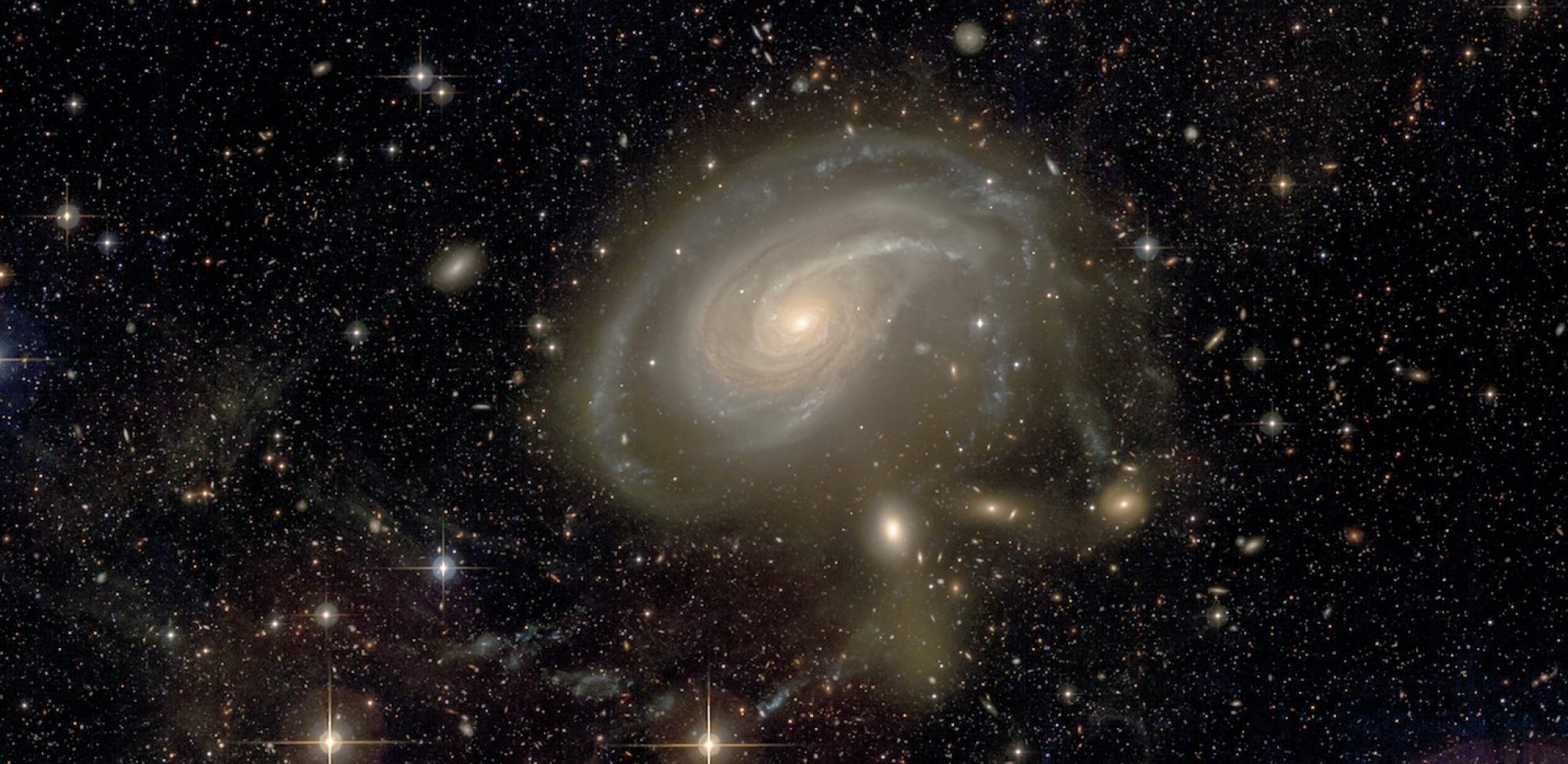
Each panel displays true color images obtained with MegaCam on the CFHT (Right: composite of g’+r’+i’ or g’+r’ observations), and for reference with the Sloan Digital Sky Survey (Top left: SDSS/DR8 image queried from the navigation tool Aladin @ CDS). Their field of view corresponds to 40 times the effective radius of the galaxy. A grey- scale g’-band version of the MegaCam image, with a field of view of about 57×57 arcmin, is displayed to the bottom right. To better identify the various objects in the field – galaxies, but also foreground stars and extended Galactic cirrus –, the composite g+r or g+r+i image has been superimposed in overburden areas. The white square delineates the area covered by the other sub-panels.
The poster highlights the large gain in surface brightness obtained with MegaCam with respect to the SDSS. The limiting surface brightness is 28.5-29 mag.arcsec-2 in the g’- band. This could be achieved thanks to an observing strategy optimized for the detection of low-surface brightness (LSB) structures, integrated exposure times of 0.7 hour for each band, and data processing with a dedicated pipeline, Elixir-LSB (Cuillandre et al., 2014, in prep.). The increased depth of the images allows us to reveal a number of LSB objects in the vicinity of the early-type galaxies, i.e. stellar streams, tidal tails, shells, distorted halos, which keep the memory of past collisions and inform on the mass assembly of these massive galaxies.
Images of a sample of 72 Atlas3D nearby ETGs (D< 42 Mpc, Cappellari et al., 2011) with available SDSS data, located in low to medium density environments, are presented in the poster and in Duc et al., (2014). All galaxies from the Atlas3D sample (260) will eventually get similar images thanks to the MATLAS CFHT Large Programme. Those located in the Virgo Cluster were already observed as part of the Next Generation Virgo Cluster Survey (NGVS, Ferrarese et al., 2012)
Poster presented at the IAU S311 conference

